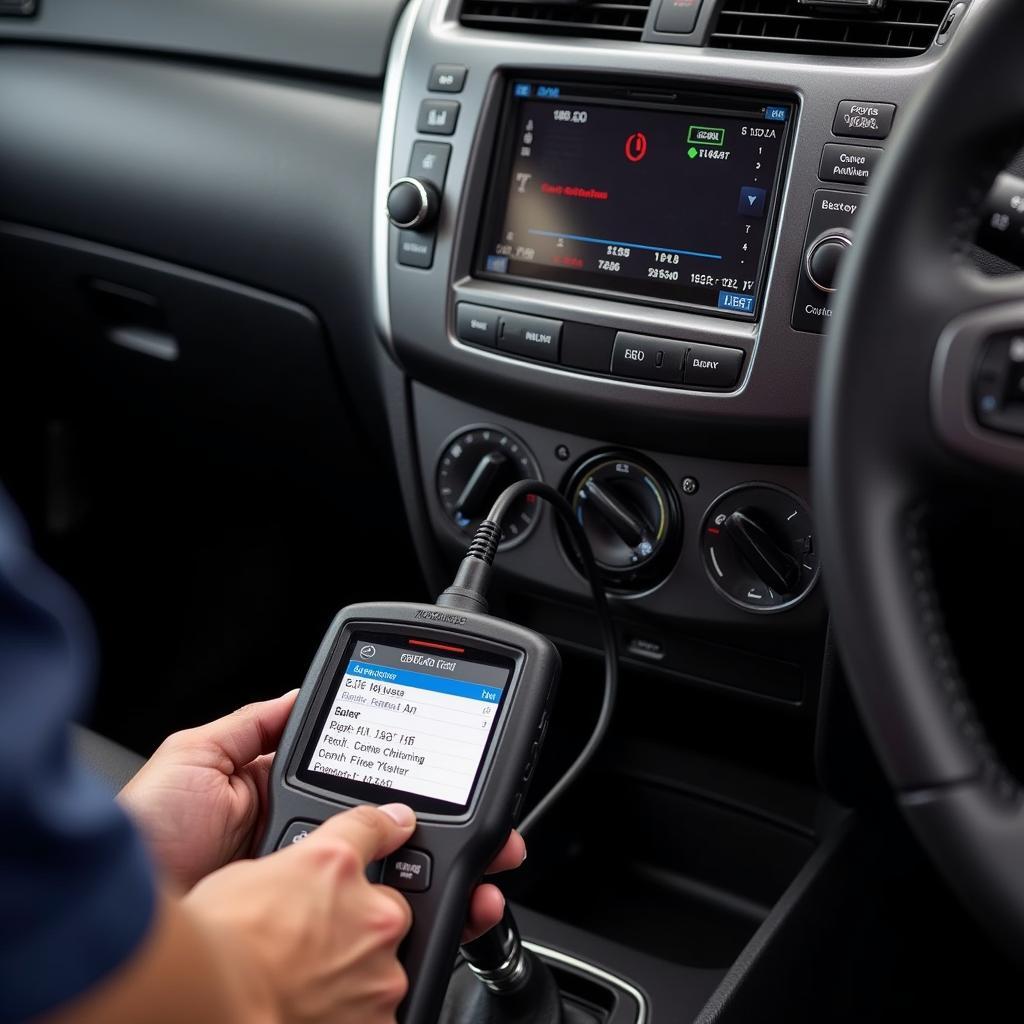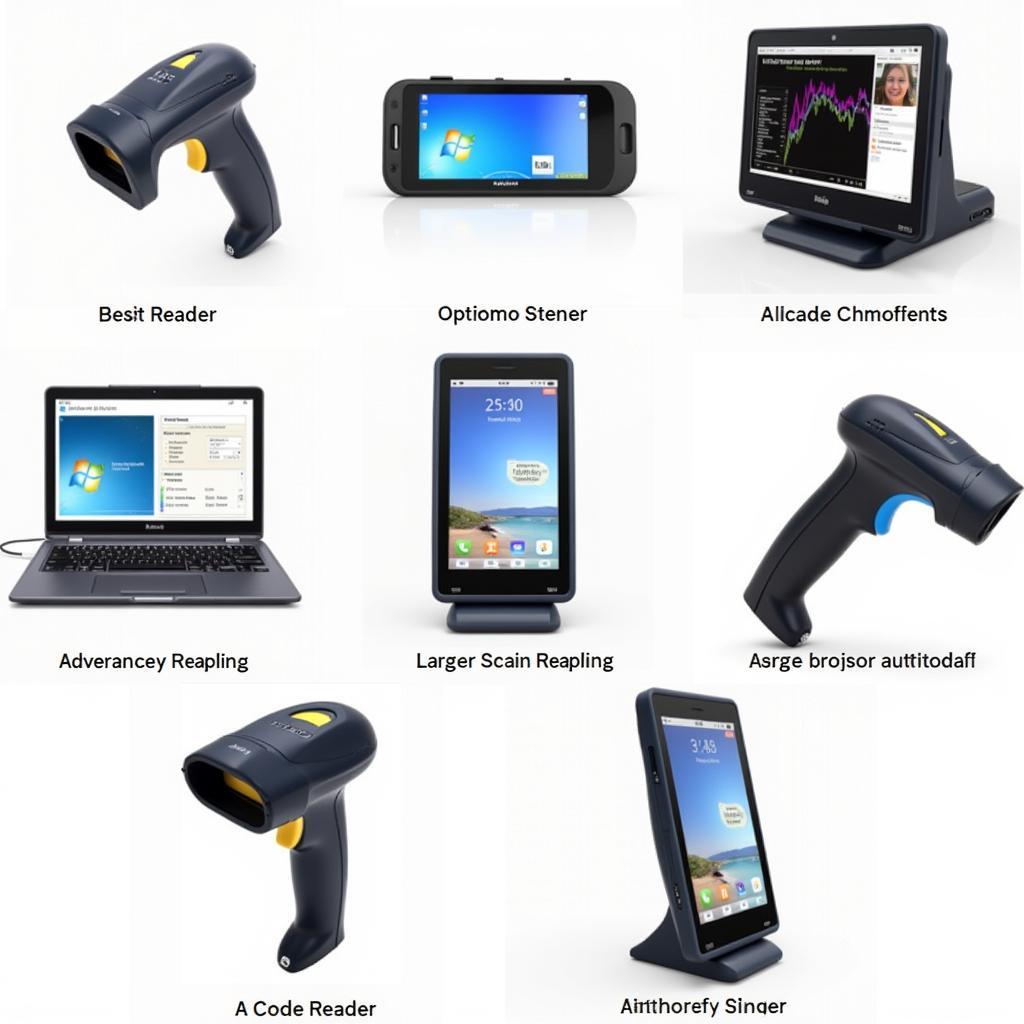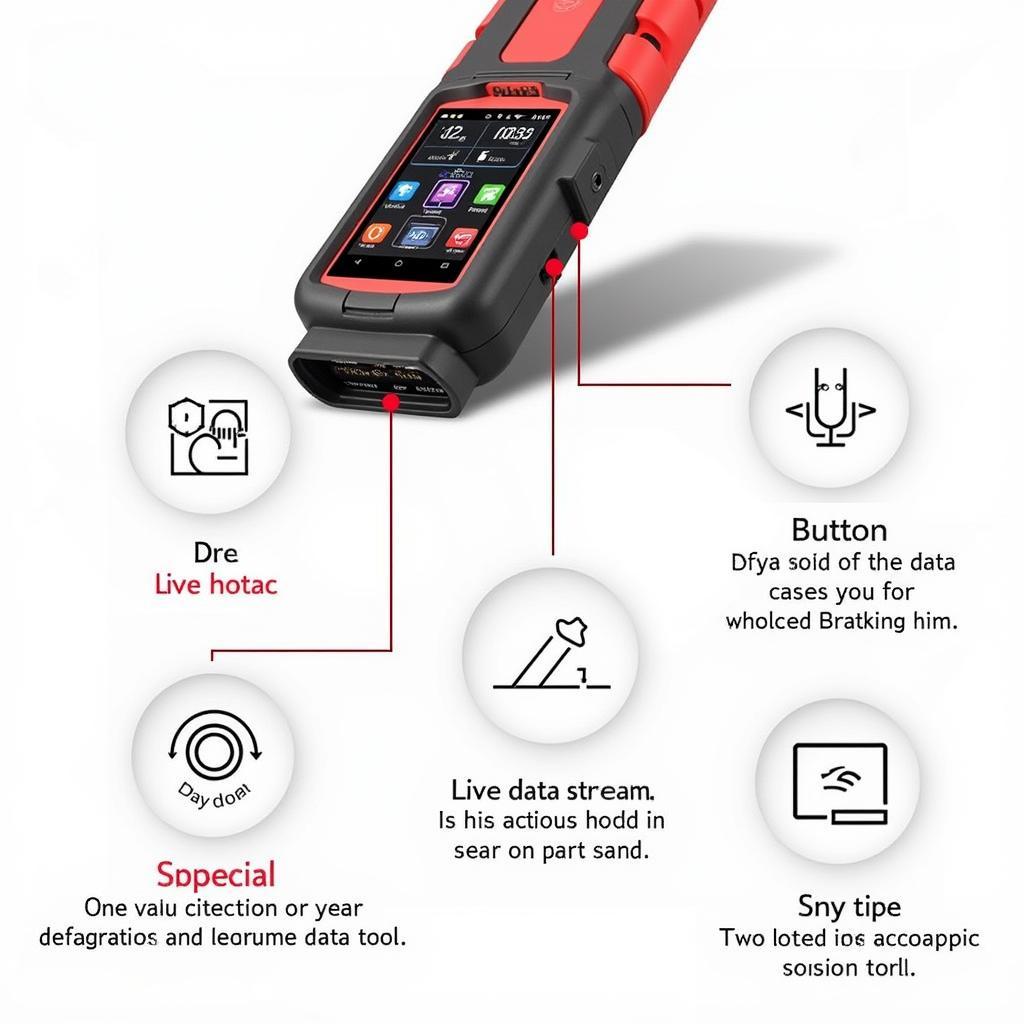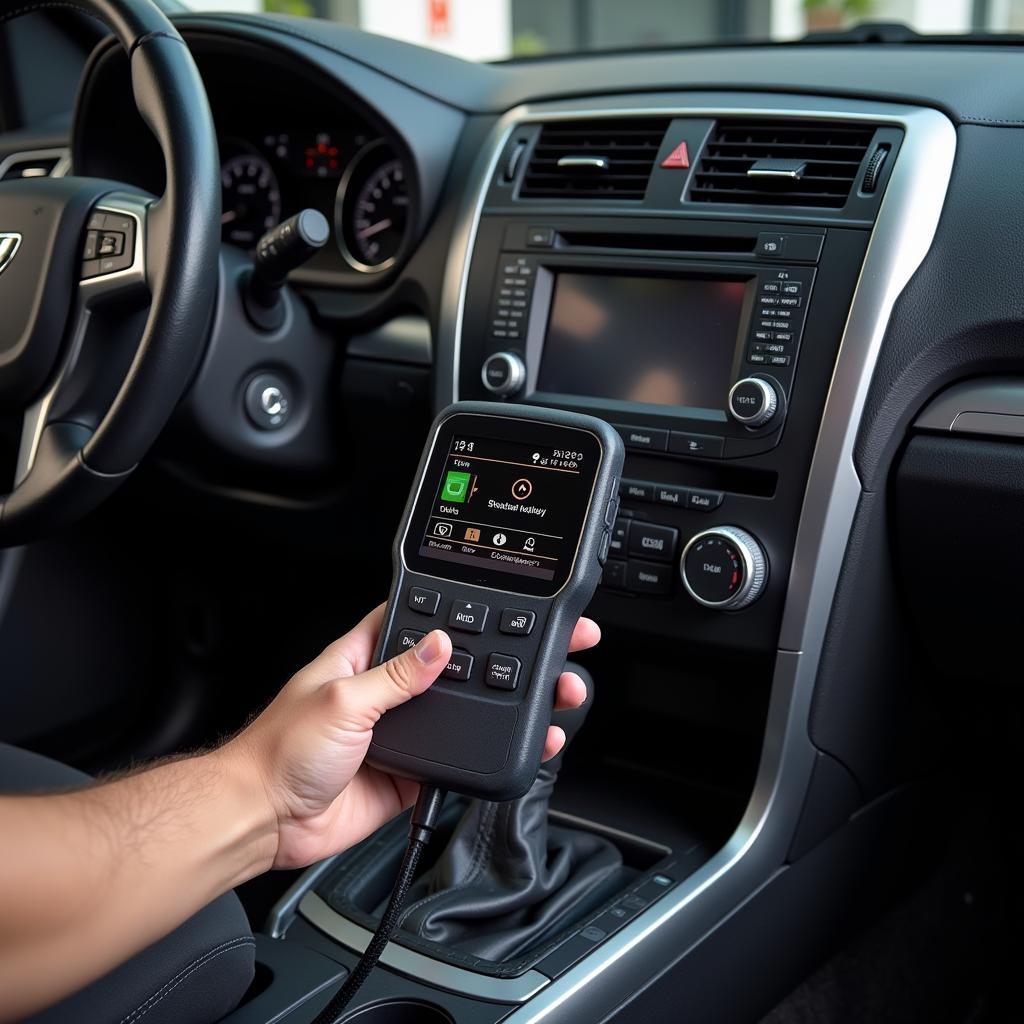In the world of modern vehicles, a simple “check engine” light can signal a myriad of issues. Gone are the days of relying solely on mechanical expertise to troubleshoot car problems. Today, the key to efficient and accurate car repair lies in the use of a Scan Tool For Car Diagnostics. This comprehensive guide will delve into the world of automotive scan tools, exploring their functionality, benefits, and how they empower car owners and mechanics alike.
Understanding the Power of Scan Tools for Car Diagnostics
 Mechanic using a car diagnostic scan tool on a vehicle
Mechanic using a car diagnostic scan tool on a vehicle
The days of relying solely on mechanical intuition to diagnose car problems are fading. A scan tool for car diagnostics, also known as an OBD-II scanner, has become as essential as a wrench in a mechanic’s toolbox. This sophisticated device acts as a window into your car’s computer system, deciphering the language of trouble codes and sensor readings. By plugging into your car’s OBD-II port, typically located under the dashboard, the scan tool unlocks a wealth of information about your vehicle’s health.
Why are Scan Tools Essential for Modern Car Repair?
Modern vehicles are complex machines controlled by intricate networks of sensors and electronic control units (ECUs). When a problem arises, the ECU logs a Diagnostic Trouble Code (DTC) or fault code. A scan tool grants you access to these codes, translating them into understandable language and pinpointing the source of the problem.
Here’s why scan tools are indispensable:
- Accurate Diagnostics: Pinpoint the exact problem area, eliminating guesswork and unnecessary repairs.
- Time-Saving: Quickly identify issues, reducing diagnostic time and getting you back on the road faster.
- Cost-Effective: Avoid expensive trial-and-error repairs by targeting the root cause of the issue.
- Enhanced Understanding: Gain deeper insights into your car’s performance, allowing for proactive maintenance.
Types of Scan Tools: Finding the Perfect Fit for Your Needs
 Various car diagnostic scan tools showcasing different sizes and functionalities.
Various car diagnostic scan tools showcasing different sizes and functionalities.
Choosing the right scan tool depends on your specific needs and technical expertise. Here’s a breakdown of the common types:
- Code Readers: Basic, budget-friendly options that read and clear basic DTCs. Suitable for car owners seeking to understand and reset their “check engine” light.
- OBD-II Scanners: More advanced than code readers, offering live data stream readings, freeze frame data, and some bi-directional control capabilities. Ideal for DIY enthusiasts and mechanics working on a budget.
- Professional-Grade Scan Tools: Comprehensive diagnostic tools with advanced features like module coding, programming, and access to manufacturer-specific data. These are essential for professional mechanics and workshops dealing with complex repairs.
Key Features to Consider When Choosing a Scan Tool
 Close-up image highlighting essential features of a car diagnostic scan tool.
Close-up image highlighting essential features of a car diagnostic scan tool.
Navigating the world of scan tools can be overwhelming. Here are key features to prioritize:
- Vehicle Coverage: Ensure the tool supports your vehicle’s make, model, and year.
- Code Library: A comprehensive DTC library with detailed descriptions for accurate diagnosis.
- Live Data Stream: View real-time sensor data to analyze engine performance, emissions, and other parameters.
- Bi-Directional Control: Allows you to activate components like fuel injectors or solenoids for testing purposes.
- Special Functions: Some tools offer advanced functions like key programming, ABS bleeding, and more.
- User Interface: Opt for an intuitive and user-friendly interface for ease of use.
Mastering the Art of Car Diagnostics with Scan Tools
While using a scan tool might seem intimidating at first, it’s a skill that can be learned. Here’s a simplified guide to get you started:
- Locate the OBD-II Port: Typically found under the dashboard on the driver’s side.
- Connect the Scan Tool: Turn the ignition to the “on” position without starting the engine.
- Read the Codes: Select the “read codes” function on the scan tool.
- Interpret the Codes: Use the tool’s code library or an online resource to understand the meaning of each code.
- Diagnose the Issue: Combine code information with your mechanical knowledge to pinpoint the problem.
“Remember, a scan tool is just a tool. Accurate diagnosis requires combining its information with your mechanical expertise and a logical approach to troubleshooting.” – John Smith, Senior Automotive Technician at XYZ Auto Repair.
The Future of Car Diagnostics: Embracing Technology
The automotive industry is rapidly evolving, and so are the tools used for diagnostics. As vehicles become increasingly sophisticated, we can expect:
- Wireless Scan Tools: Offering greater mobility and convenience for mechanics.
- Cloud-Based Diagnostics: Access to vast databases and remote diagnostics capabilities.
- Artificial Intelligence (AI): AI-powered diagnostics to predict and prevent potential problems.
Conclusion
Investing in a scan tool for car diagnostics is no longer a luxury but a necessity in the age of computerized vehicles. Whether you’re a car enthusiast, a DIY mechanic, or a professional technician, the right scan tool can save you time, money, and frustration. By empowering yourself with the knowledge and tools to understand your vehicle’s language, you can ensure its longevity and keep it running smoothly for years to come.
For expert advice on choosing the right scan tool or assistance with complex car diagnostics, don’t hesitate to contact ScanToolUS at +1 (641) 206-8880 or visit our office at 1615 S Laramie Ave, Cicero, IL 60804, USA. Our team of experienced technicians is here to help you navigate the world of car diagnostics and keep your vehicle in top condition.

